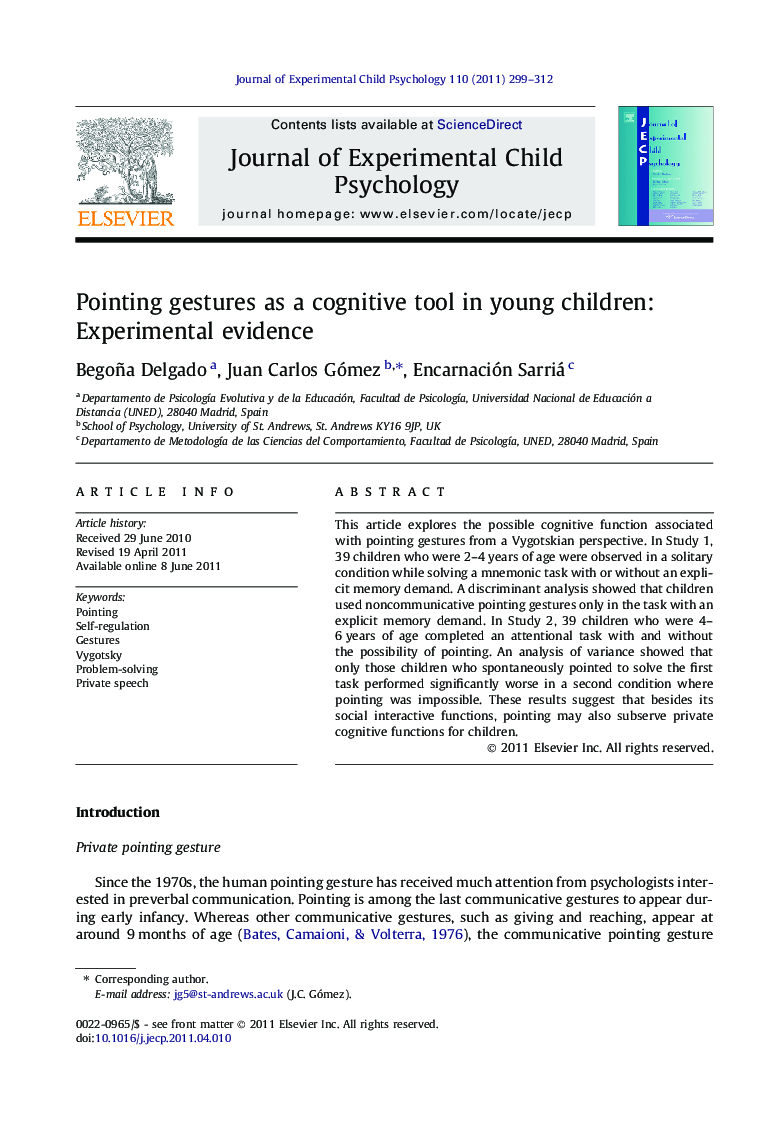| Article ID | Journal | Published Year | Pages | File Type |
|---|---|---|---|---|
| 918404 | Journal of Experimental Child Psychology | 2011 | 14 Pages |
This article explores the possible cognitive function associated with pointing gestures from a Vygotskian perspective. In Study 1, 39 children who were 2–4 years of age were observed in a solitary condition while solving a mnemonic task with or without an explicit memory demand. A discriminant analysis showed that children used noncommunicative pointing gestures only in the task with an explicit memory demand. In Study 2, 39 children who were 4–6 years of age completed an attentional task with and without the possibility of pointing. An analysis of variance showed that only those children who spontaneously pointed to solve the first task performed significantly worse in a second condition where pointing was impossible. These results suggest that besides its social interactive functions, pointing may also subserve private cognitive functions for children.
► We study the use of pointing gestures as a private cognitive tool beyond infancy. ► In Study 1 we show that 2–4 year olds used solitary pointing to help themselves remember the location of an item. ► In Study 2 4–6 year olds who spontaneously used pointing in an attentional task performed worse when not allowed to point. ► We conclude that pointing gestures fulfil private cognitive functions as well as communicative functions in children.
